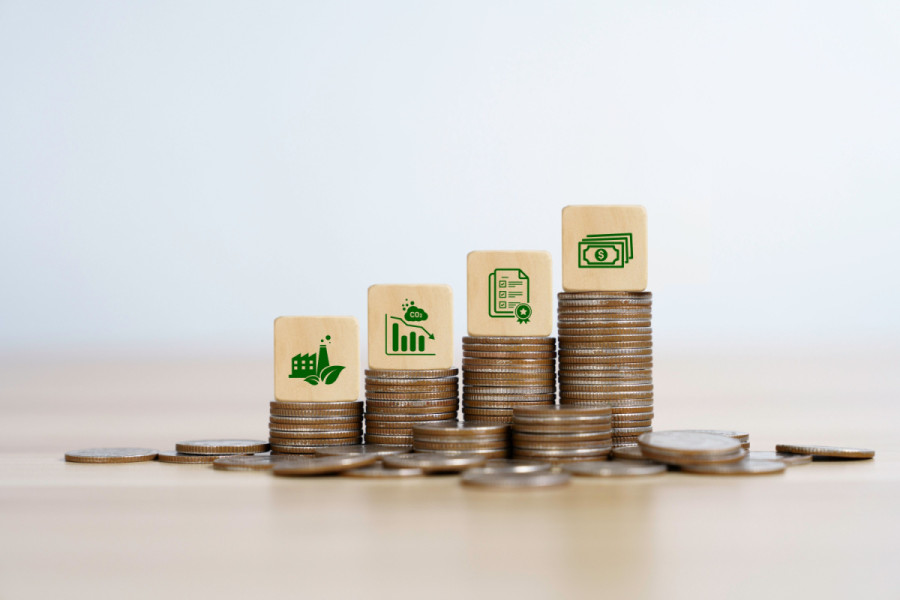Columns
Letting go of the victim mindset
Nepal must make rational investments for higher profits to build a climate-resilient future.
Aditya Acharya
The Paris Agreement, adopted by the party members of the United Nations Framework Convention on Climate Change (UNFCCC) in 2015, during the 21st annual Conference of the Parties (COP21) in Paris, was a landmark agreement towards solving the ongoing climate crisis. While signing it, 196 party members agreed to hold “the increase in the global average temperature to below 2 degrees Celsius above pre-industrial levels” and “to limit the temperature increase to 1.5 degrees Celsius above pre-industrial levels” by the end of the century. For this, an Intergovernmental Panel on Climate Change (IPCC) special report, Global Warming of 1.5 degrees Celsius, recommended that “net-zero” emissions be achieved by 2050.
The major greenhouse gas (GHG) emissions, like carbon, cannot be stopped entirely without using fossil fuels. Net-zero is adopted to limit its atmospheric concentration and prevent the rise of global temperature. Even if carbon and other GHGs are emitted, the emitting agency, such as a state, company or organisation can buy an equivalent amount of carbon from the carbon sellers and claim that the effective amount of their emissions is zero. This is what achieving net-zero emissions means.
Adopting the Paris Agreement was a key point in implementing this concept. While the agreement itself does not explicitly use the term net-zero, it sets the goal of achieving a balance between anthropogenic emissions of GHGs and removals by sinks, the places where carbon is captured and stored. This effectively implies a commitment to achieving net-zero emissions globally. Since then, net-zero emissions have become a central focus in international climate negotiations, national climate action plans and corporate sustainability goals.
Using net-zero as a means, some major emitting countries and large multinational companies pay money to nations/agencies that sequester (capture and store) carbon from the atmosphere; i.e., they buy carbon and claim themselves as net-zero emitters or climate-neutral. The mechanism of buying and selling carbon is called the carbon market. Nepal aims to sell carbon in such markets—primarily the carbon sequestered by forests. This article argues why Nepal should strive to become a carbon buyer rather than a seller.
The victim mindset
Nepal portrays itself as a major victim of climate change in climate conferences. Every delegate prioritises the message: Despite a negligible role in climate change, we are bearing the most negative impacts, and this is a gross injustice. We need more financial and technological help from the developed countries to adapt to the impacts, and they should pay for the losses and damages we have suffered. This has continued for over a decade, and the delegation led by Prime Minister Pushpa Kamal Dahal at the COP28, in Dubai, stressed the same thing, among other issues. (Demands for loss and damage started only a few years ago).
This seems logical as the so-called developed countries are primarily responsible for climate change, and emission reduction from countries like Nepal won’t significantly limit the rise in temperature. Additionally, we have limited capacity and resources to fight the negative impacts caused by others. We often lament being victims but don’t take steps to reduce our vulnerability to climate change. Change has already occurred, and even if the emissions stop now or in the future (which seems unlikely based on current emission scenarios), we will face negative impacts. This calls for making profitable investments by establishing large industries and production systems in Nepal that may emit large amounts of GHGs. Achieving net-zero means we can still emit large amounts of GHGs if we offset the same amount elsewhere.
Rational investments
Nepal aims to sell carbon stored in the forests to the carbon markets. This requires quantifying the amount of carbon that can be sold. Doing nothing and selling carbon for a small price may be easier. Still, considering the never-ending increase in GHG emissions and the so-called developed countries’ failure to keep their promises of help, we will either have to suffer more or become increasingly dependent on loans, donations and grants to adapt.
At each climate conference, our negotiation suggests that only the lack of money makes us more vulnerable to the impacts of climate change. If this is true, we should plan and start investing in businesses and production systems that are more profitable than selling low-value carbon just because it does not require additional work.
As we haven’t considered whether selling carbon or buying it to achieve net-zero by investing in business and production systems emitting GHGs would benefit, investment analysis is the first step. If establishing industries and production systems that emit GHG generates more profits than selling carbon, we should choose the first option, buy carbon from others to achieve net-zero and use the profit to build more climate resilience.
Therefore, our practice of portraying ourselves as victims and stretching our arms for alms should stop soon. Nepal should invest in more profitable business/production systems, emit GHGs, and use the carbon planned to be sold in the carbon markets to offset the GHG emissions. If that is insufficient to reach net-zero, we should buy carbon from the carbon market using a fraction of the profit. Since the so-called developed countries and two-thirds of the world's biggest companies are making large profits even after buying carbon credits to reach their net-zero commitments, we should also consider doing the same. Our primary goal should be to develop an investment mindset and create a conducive investment environment.




 8.12°C Kathmandu
8.12°C Kathmandu















